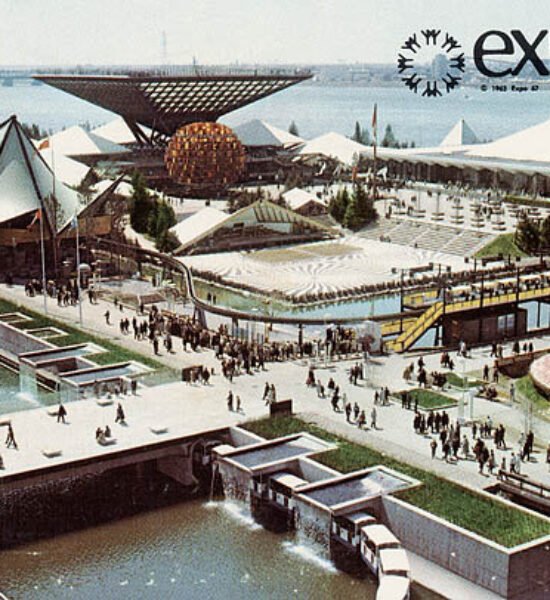Canada’s centennial year, 1967, was marked by a festival of epic proportions—Expo 67 in Montreal. This world fair, known officially as the 1967 International and Universal Exposition, remains one of the most successful and memorable events in Canadian history. With its theme “Man and His World,” Expo 67 showcased technological advancements, cultural exhibitions, and architectural wonders from around the globe, attracting over 50 million visitors. This blog delves into the unforgettable moments and lasting legacy of Expo 67.
The Grand Opening: A Day to Remember
Expo 67 officially opened on April 27, 1967, with a ceremony that captured the world’s attention. Prime Minister Lester B. Pearson inaugurated the event in front of a crowd that included international dignitaries, media, and eager visitors. The ceremony was marked by an impressive flypast by the Royal Canadian Air Force and a spectacular fireworks display, setting the tone for the excitement and grandeur of the exposition.
The opening day was not just about pomp and pageantry; it was a celebration of Canadian pride and international cooperation. The event began with a parade of flags representing the participating countries, followed by cultural performances that highlighted the diversity and unity of the global community. This grand kickoff was a fitting start to what would become a milestone in Canada’s history.
Architectural Marvels: Icons of Innovation
One of the most unforgettable aspects of Expo 67 was its groundbreaking architecture. Several pavilions and structures became instant icons, showcasing innovative designs and futuristic concepts. Among these, Habitat 67 stood out as a symbol of modernist architecture and urban living.
Habitat 67
Designed by Israeli-Canadian architect Moshe Safdie, Habitat 67 was an experiment in modular construction and community living. The structure, made up of 354 interconnected concrete units, created a unique and visually striking housing complex. It offered a solution to urban housing challenges, emphasizing green spaces and communal areas. Today, Habitat 67 remains a residential complex and a testament to the innovative spirit of Expo 67.
The Canadian Pavilion
The Canadian Pavilion was another architectural highlight. Featuring a stunning inverted pyramid design, the pavilion was a visual masterpiece. Inside, it showcased Canada’s natural resources, cultural heritage, and technological advancements. The pavilion was a favorite among visitors, symbolizing Canada’s pride and progress as it celebrated its centennial.
Cultural Extravaganza: A Global Showcase
Expo 67 was not just about structures; it was a celebration of culture and diversity. The fair featured 90 pavilions from different countries, corporations, and organizations, each presenting their unique cultural and technological contributions.
International Pavilions
Countries from around the world participated, bringing with them exhibits that highlighted their achievements and cultural heritage. The Soviet Union’s pavilion, for example, showcased space technology, while the United States’ pavilion featured the Apollo space program. These exhibits not only fascinated visitors but also promoted a spirit of global unity and cooperation during a time of Cold War tensions.
La Ronde
La Ronde, a permanent amusement park built for Expo 67, added a layer of fun and excitement. It featured rides, games, and entertainment that appealed to visitors of all ages. Today, La Ronde continues to operate as one of Montreal’s most popular attractions, a lasting legacy of Expo 67.
Performances and Entertainment: A Feast for the Senses
Expo 67 was a cultural feast, offering performances and entertainment from around the world. The event featured concerts, theatrical performances, and dance shows that highlighted the richness of global cultures.
Musical Legends
The fair hosted numerous legendary performers, including Marlene Dietrich and Charles Aznavour, who captivated audiences with their talent. These performances added a touch of glamour and sophistication to the event, making it a truly unforgettable experience.
Legacy of Expo 67: A Lasting Impact
Expo 67 left an indelible mark on Montreal and Canada. It symbolized the country’s coming of age on the world stage and its cultural and technological advancements. The event fostered a spirit of international understanding and cooperation, resonating far beyond its six-month duration.
Urban Development
The infrastructure developed for Expo 67, including the islands of Île Sainte-Hélène and Île Notre-Dame, contributed significantly to Montreal’s urban landscape. These areas were transformed into recreational spaces, hosting parks, museums, and cultural venues that continue to benefit the city’s residents and visitors.
Cultural Heritage
Expo 67 also enriched Canada’s cultural heritage, inspiring future generations of artists, architects, and thinkers. It highlighted the importance of cultural exchange and the value of showcasing diverse perspectives.
Conclusion: Expo 67’s Unforgettable Legacy
Expo 67 was more than just a world fair; it was a milestone in Canadian history, a celebration of human achievement, and a testament to the power of cultural exchange. From its grand opening to its architectural marvels and cultural showcases, Expo 67 remains an unforgettable chapter in Canada’s story. As we look back on this remarkable event, we are reminded of the lasting impact it had on Montreal, Canada, and the world.
Expo 67 will forever be remembered as a time when the world came together to celebrate “Man and His World,” leaving a legacy that continues to inspire and captivate us today.





Your article helped me a lot, is there any more related content? Thanks!